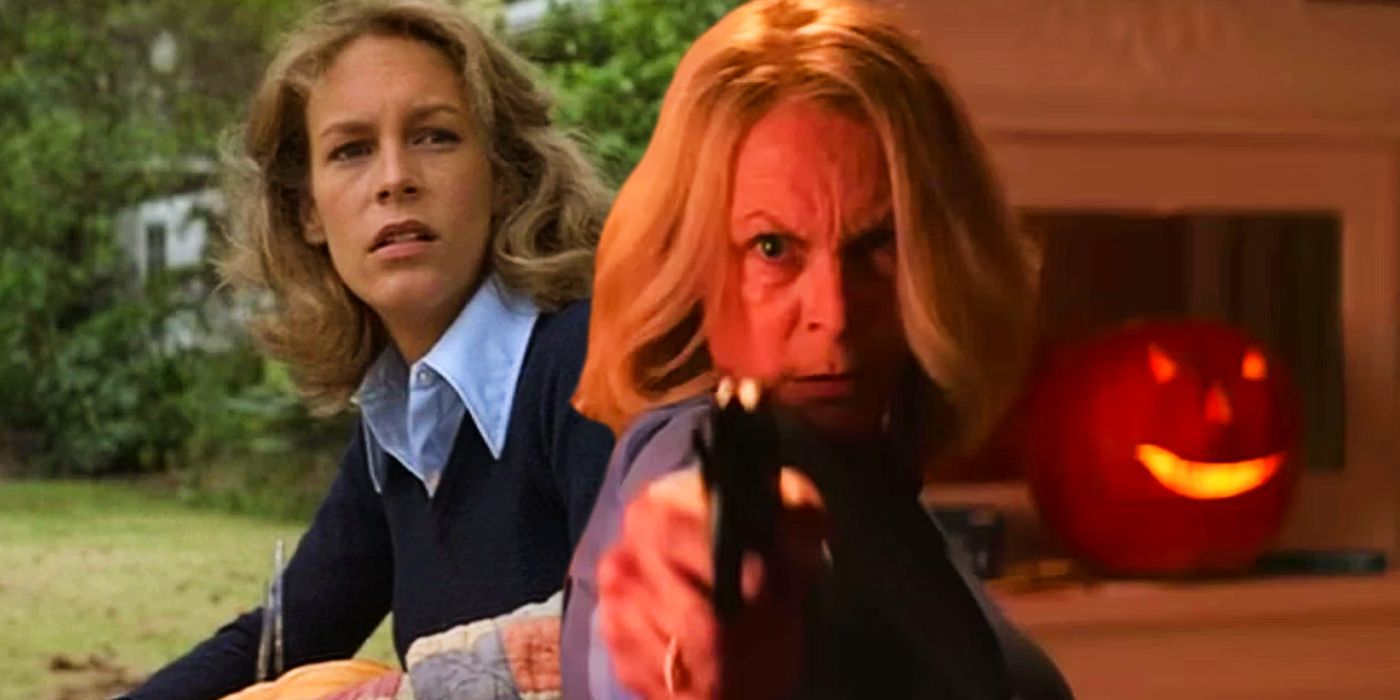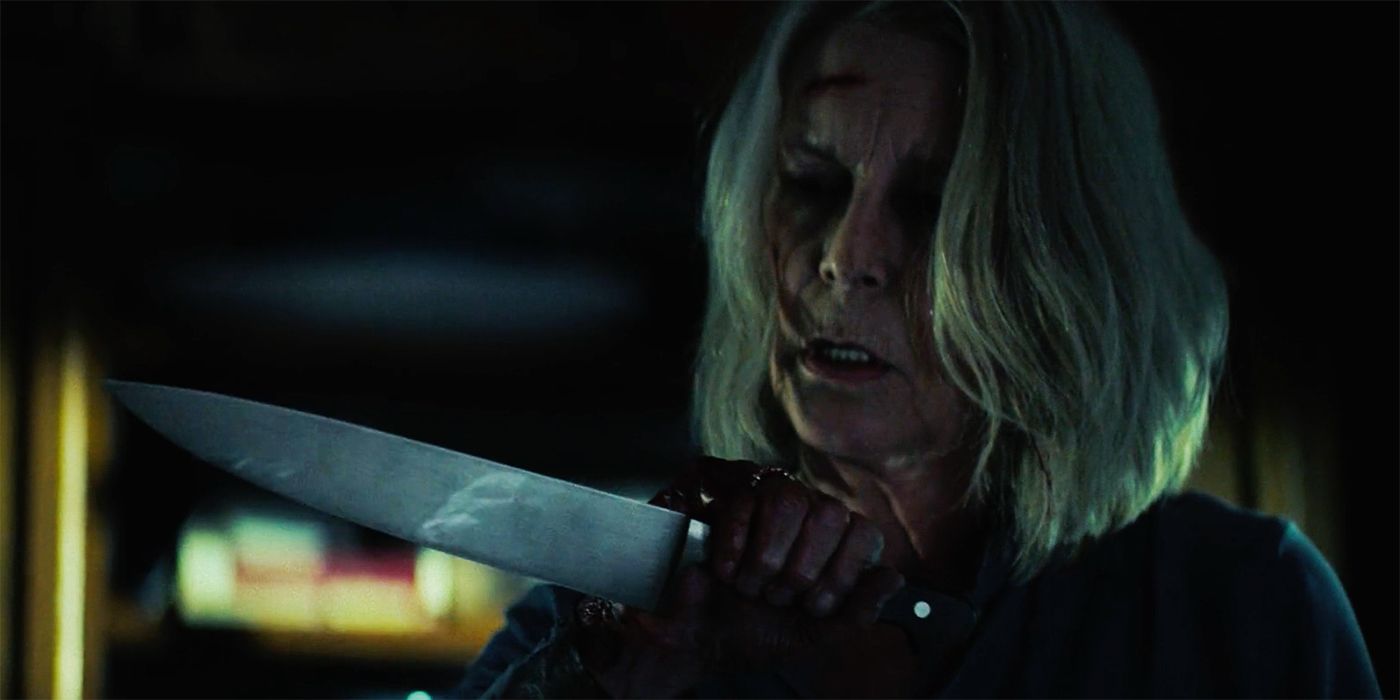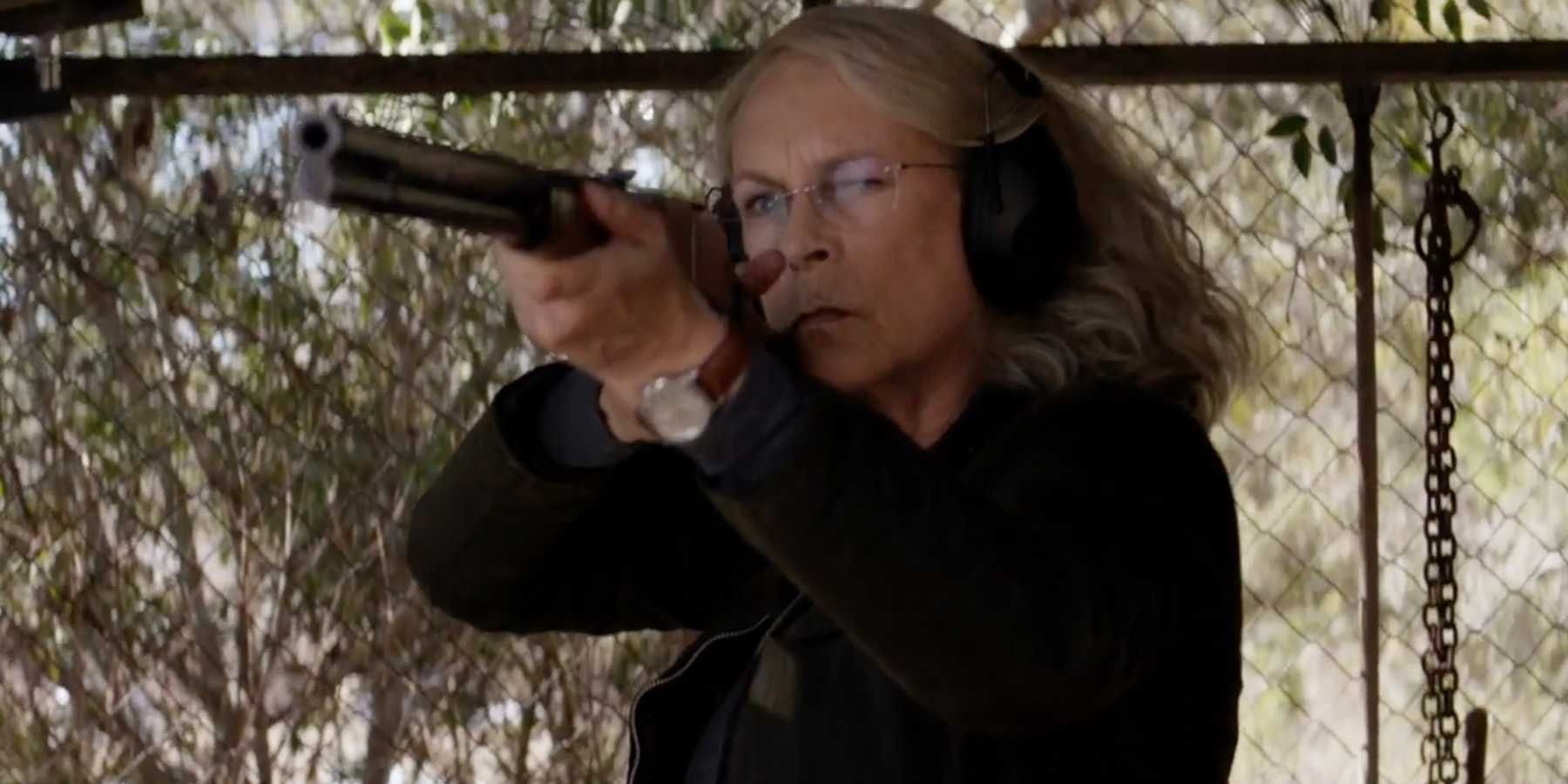Warning: Contains SPOILERS for Halloween Ends One scene from Halloween Ends pays homage to a famous moment from the original Halloween but also shows just how much Laurie Strode (Jamie Lee Curtis) has changed since John Carpenter's 1978 slasher. Halloween Ends is the final chapter of David Gordon Green's Halloween trilogy and takes place 4 years after the events of Halloween (2018) and Halloween Kills when Haddonfield, still reeling from the collective trauma caused by Michael Myers' killing sprees, falls victim to a new string of murders. Wearing the mask in this iteration is a Michael Myers' copy-cat killer Corey Cunnigham, but when Corey dies in Laurie's home, the real Micheal Myers emerges from the sewers for one last battle with Laurie. It's in this conflict that the clever Halloween Ends Easter egg occurs.
The film's third act features a scene that echoes and inverts one of the most famous scenes from the 1978 original. When Michael Myers stalks Laurie around her house, Laurie hides in her kitchen pantry and watches Michael through its see-through doors as he paces around the kitchen. The arrangement of this scene clearly replicates a moment from the 1978 original where Laurie, terrified and desperate, is forced to hide in a closet - again with see-through doors - before Michael discovers her, and she narrowly escapes. While this scene portrayed Laurie as a desperate victim forced into the closet to evade Michael, the kitchen scene at the end of Halloween Ends shows an entirely different Laurie, one who is in control of her fate and lures Michael into a trap that will cause his death. In this way, Halloween Ends both inverts and enhances the original Halloween's approach.
Halloween Ends' Kitchen Scene Proves How Much Laurie Has Changed
This scene exemplifies the significant changes Laurie's character has undergone throughout the Halloween franchise. Gordon Green directs the opening of the scene to look like a direct copy of the closet scene from the original. Laurie watches Michael through see-through doors with what initially seems an expression of terror and holds her breath much as she did in the original. Soon, however, the audience discovers that Laurie has set the microwave on a timer and is waiting for a noise to distract Michael (a.k.a "The Shape") and provide her with the opportunity she needs. As planned, the sound of the microwave flusters Michael, allowing Laurie to burst out of the pantry and attack him. Having outsmarted Michael, Laurie pins him to the table with multiple knives and slices his throat, finally killing him after a brutal fight, underlining her supremacy over the killer.
The kitchen scene thus proves how much Laurie has changed since the events of the 1978 original. While the younger Laurie is stalked and chased around her house, hiding in the closet as a last resort with no apparent plan, the Laurie Strode portrayed in Halloween Ends is in full control of the situation, luring Michael into a trap she knows he will fall into. As epitomized in this sequence, Laurie has evolved from a scared and fortunate victim who narrowly escapes, to an unfazed survivor who turns Micheal Myers into the hunted not the hunter.
Halloween Ends Continues A Key Laurie Strode Trend
Halloween Ends develops and rounds off a central theme of David Gordon Green's Halloween trilogy, that of Laurie's obsession with Michael Myers and staying prepared for the return of evil in the world. A key component of Halloween Ends is the potentially damaging effects of paranoia and always living in fear. Indeed, the opening scenes of the film show Laurie trying to live a normal life with her granddaughter Allyson and move on from the trauma caused to herself, her family, and Haddonfield.
While Laurie's obsession with Micheal's return has caused her to live in fear, led to tension within her family, and meant she has never truly moved on from the trauma of Halloween night in 1978, Halloween Ends shows that all her preparation has not been in vain. The way Laurie calmly outsmarts Micheal, kills him, and disposes of his body in an industrial processor, shows a woman who may be permanently affected by her trauma, but whose determined preparation allows her to finally do what nobody else can; kill Micheal Myers.



